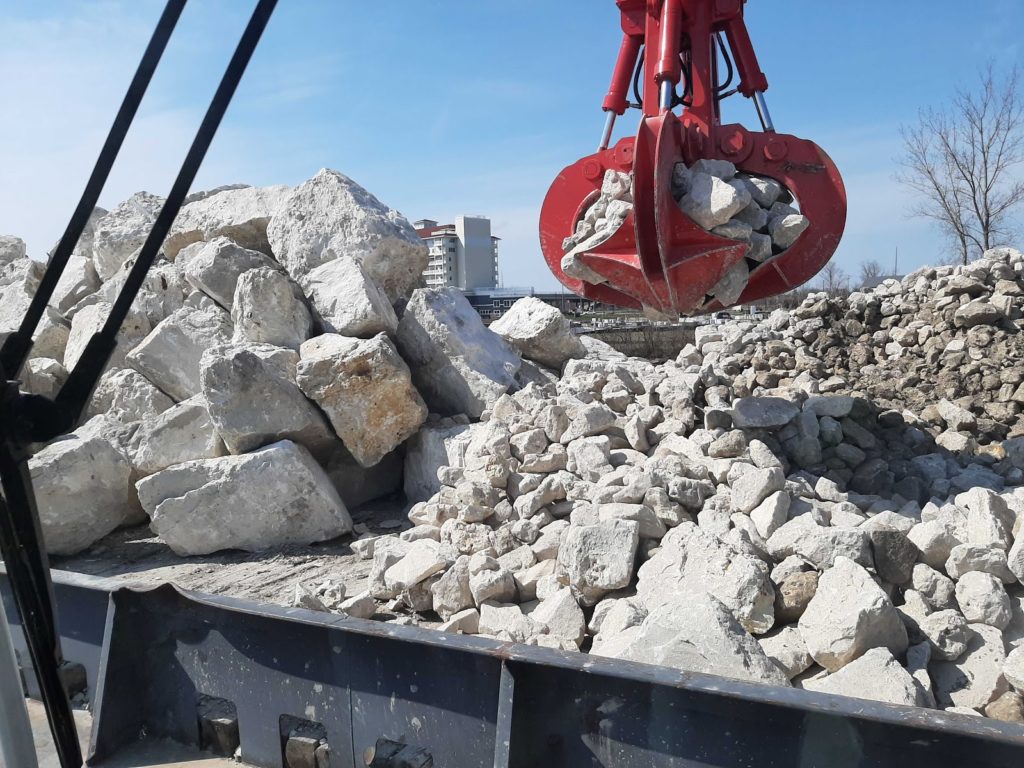What is a rock revetment?
In stream restoration, river engineering, and coastal engineering, “revetments” are sloping structures placed on banks or cliffs in such a way as to absorb the energy of incoming water. By utilizing a carefully engineered gently sloped angle of layered boulders to absorb, rather than reflect, the harsh wave energy of incoming water, rock revetments can protect a shoreline long-term from potentially devastating effects of wave erosion.
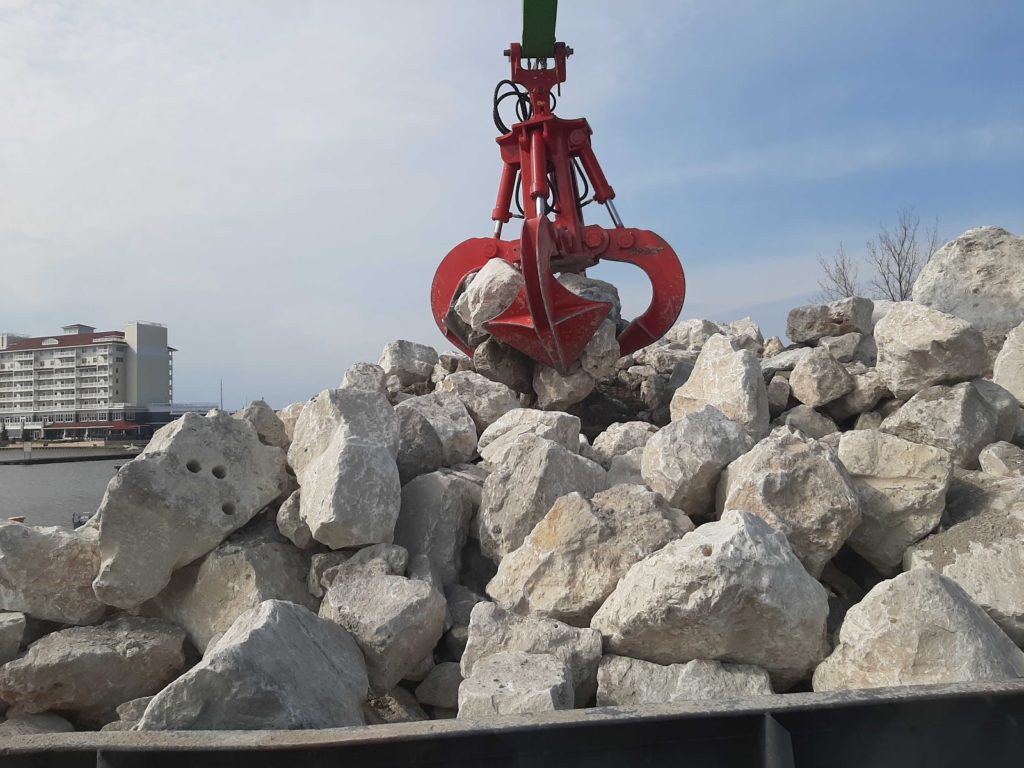
What are alternatives to rock revetment?
Seawalls vs Rock Revetment
One alternative to rock revetments is a seawall. With a seawall, wave energy hits a flat surface and gets reflected back with powerful force. What happens next is called the “scouring effect”: localized erosion in sand caused by the acceleration of water flow as it changes direction and speed around an obstruction in the water. As scouring happens, if it gets too deep and washes out foundational sand, the seawall will fail, and the shoreline may have been impacted by the scouring effect so severely that the beach may be gone forever.
White Lake Dock & Dredge does not build seawalls in Lake Michigan unless in conjunction with a significant rock revetment. Though they are viable for inland lakes, where the force of wave energy is significantly less than in Lake Michigan, we highly recommend against the use of seawalls on Lake Michigan unless they are built as a component of a significant rock revetment. However, this design tends to dramatically increase costs while offering marginal benefits when compared to a rock revetment solution, alone. As a component in a long-term plan, seawalls may be a viable option, but a combination of seawall and rock revetment is very expensive, as it includes tons of rock as well as the steel for the seawall.
For more on erosion and scouring, please follow this link to FEMA’s “Erosion, Scour, and Foundation Design” guidance.
Sandbags vs Rock Revetment
Placing sandbags or planting trees at the shoreline are popular homemade solutions to slow shoreline erosion. Though these can mildly slow erosion down, they are too easily destroyed by severe weather events or direct wave action. We recommend the planting of trees or beachgrass as a component of a rock revetment to further mitigate erosion and create a more natural looking coastline.
Groin Walls vs Rock Revetment
Groins are walls placed out in water perpendicular to the shore to trap sand between the groins to counter the scouring effect. Groins have not been legal in the state of Michigan for a long time due to harsh environmental impacts deemed too detrimental to continue their use.
How are rock revetments constructed?
The first step in the construction of a rock revetment is to excavate material above and below the desired slope angle to prepare the site for a rock revetment installation. WLDD excavates a profile down into the water, up to 8 feet below the water level, then back up to the top of the structure. The slope will generally be a ratio of at least 2.5 (horizontal length) to 1 (vertical height) for a slope no steeper than 21.8 degrees.
After the excavation and site prep is done, the next step in the installation is to lay down geotextile cloth. The thick, non-woven geotextile material provides a base layer that prevents the rocks from settling into the sand and soil. Rocks are then placed on the overlaps or seams to bind the cloth panels together. If a boulder was placed on a beach without this cloth, it would eventually sink down into the sand and disappear out of sight. The geotextile prevents that from happening and is as important to the success of revetments as the rock itself. While some contractors will skimp or cut corners on this part of the revetment, White Lake Dock & Dredge installs this geotextile cloth in overlapped panels to a greater extent than many of our competitors.
What kind of rocks are used in revetment?
The next step is to place toe stone. Toe stone is placed at the end of the slope, oftentimes up to 8 feet under water, and can be the size of an SUV. These stones weigh 4 – 6 tons per stone. These are used to anchor the entire slope of the rock revetment allowing the rest of the structure to be built behind it.
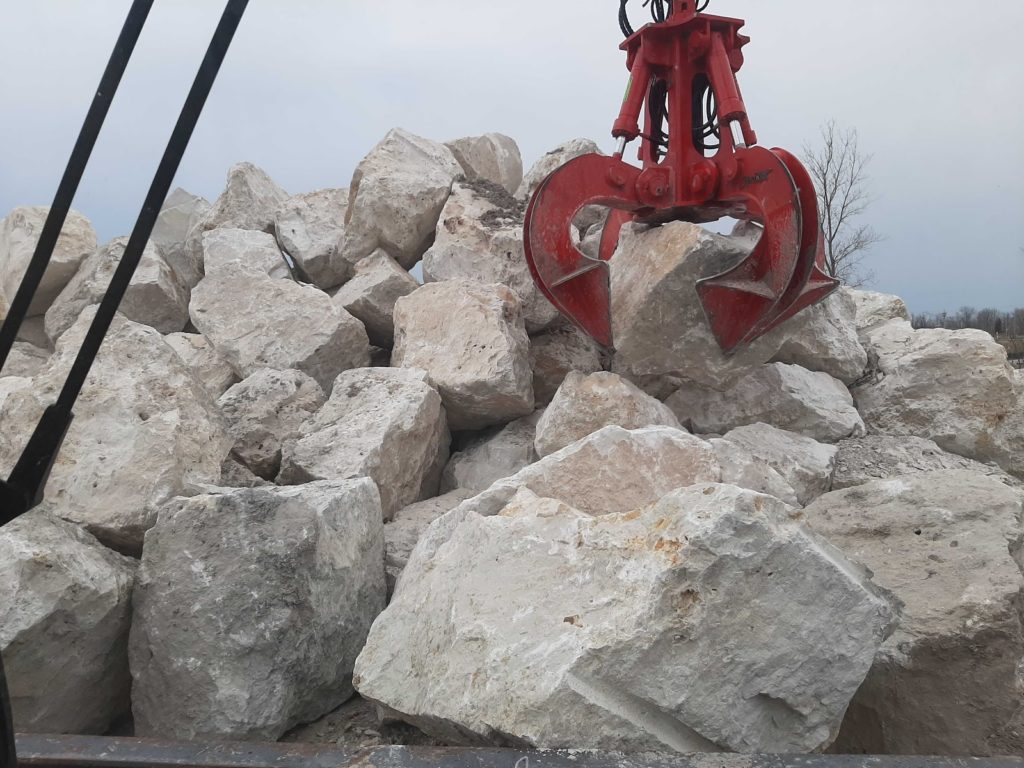
The next step is to place the bedding stone. Bedding stone is a relatively smaller stone that makes up the first layer of stones in the rock revetment. This creates a layer that larger stones will rest on and lock into. Bedding stone is between 8” to 18” in diameter per stone.
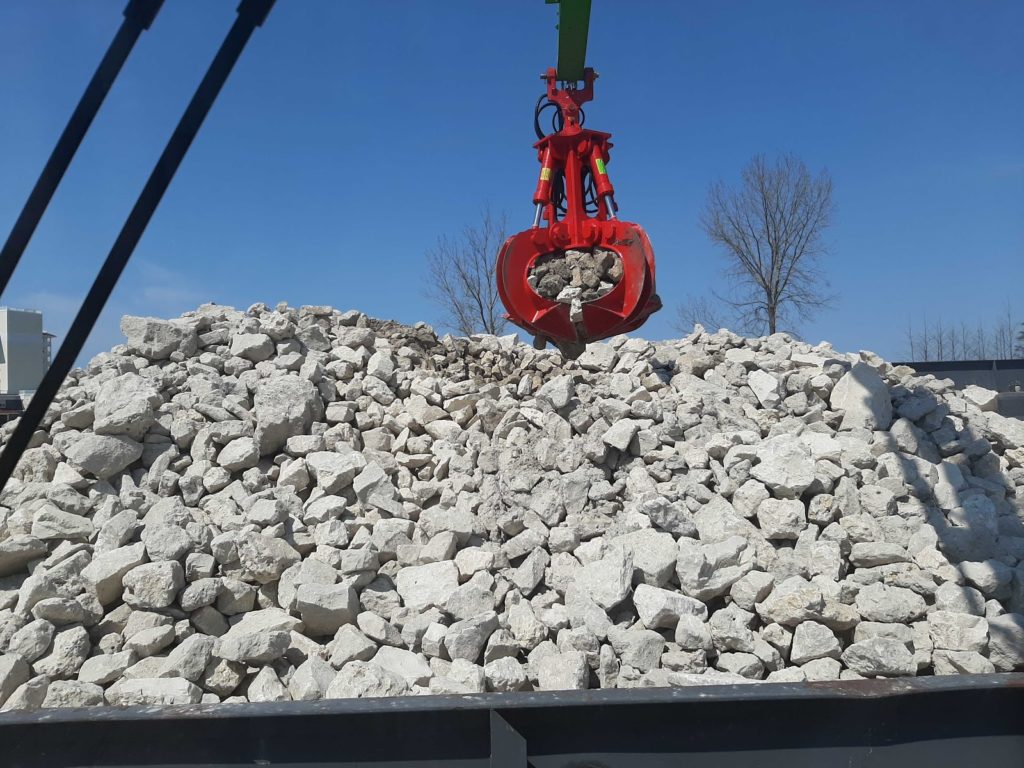
Next is the armor stone. This stone is placed from the toe stone to the top of the revetment, on top of the bedding stone. These big stones create the outermost layer of the rock revetment and earn their name as the first line of defense against wave energy. Armor stones are 24” to 48” inches in diameter per stone. Overall, we recommend 8-10 tons of stone per linear foot of frontage: the linear measurement of waterfront property.
Can I use a rock revetment for cliff erosion?
For cliff or bluff situations, we will excavate and fill in to meet the angle or excavation profile we need to complete the revetment design. This is at least a 2.5:1 ratio. The gentler the slope the better – 3:1 is better than 2.5:1. In some situations if the erosion is too close to a structure (e.g. a house) and this angle may not be possible. Each project is different and we have extensive experience dealing with these situations.
Will I need a permit for rock revetment on my shoreline?
The permitting process begins as soon as a contract is initiated. We work with professional engineers to get each design permitted. Each design changes depending on the individual project’s characteristics and needs. The Michigan Department of Environment, Great Lakes, and Energy (EGLE) and United States Army Corps of Engineers joint permit application process can take some time. It is important to know that a permit for a project is not an endorsement or guarantee that the project will succeed in controlling erosion, only that the environmental impact of the project itself is acceptable to the regulators. In our experience, the more neighbors who agree to “team up” to take on these projects the better the project goes. More neighbors is not only helpful for economies of scale and lowering project costs but will also help mitigate potential issues in the permitting process.
Once the permitting process is completed, White Lake Dock & Dredge will perform the excavation and construction to install the rock revetment.
What is coastal management in the Great Lakes?
Coastal management refers to large scale projects (such as Army Corps of Engineer or other government agency controlled projects) on coastlines and environments.
Unlike home construction, where there is a building code to adhere to (location of fire alarms, window placement, foundation materials, etc), there is no such guide or code for rock revetment or erosion control projects. The basis of the erosion control industry is expert engineering theory, professional opinion, and experience. As such, the Army Corps of Engineers does not recommend a specific solution.
However, the Army Corps of Engineers primarily uses rock revetment or rock revetment combined with seawalls for their projects. We agree that it is the most effective form of long-term erosion control & protection on the shoreline.
How do Lake Michigan water levels affect inland water?
Lake Michigan water levels also affect inland lakes, rivers and wetlands. If water rises in one place, water will rise in the other. Inland lakes projects are subject to different forces than Lake Michigan and seawalls can be considered for inland projects. White Lake has installed miles of rock revetment and erosion control measures across Lake Michigan and the inland lakes of Michigan.
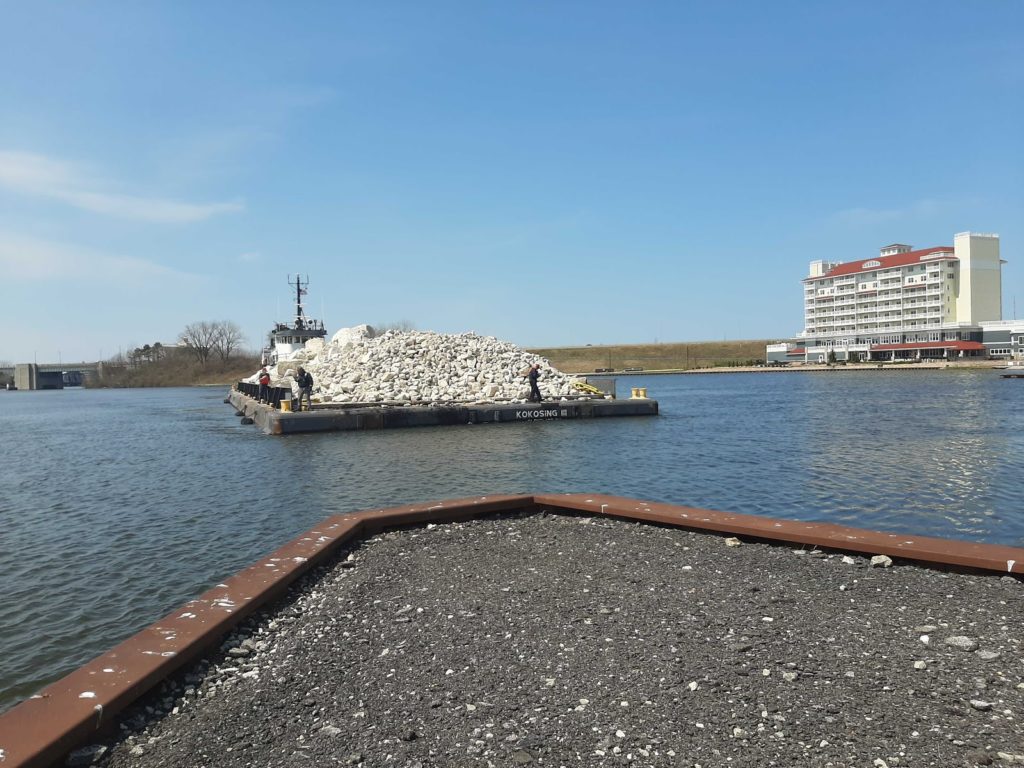
Protect Your Shoreline
Tell us about your project. We'll make a professional recommendation based on your needs.

